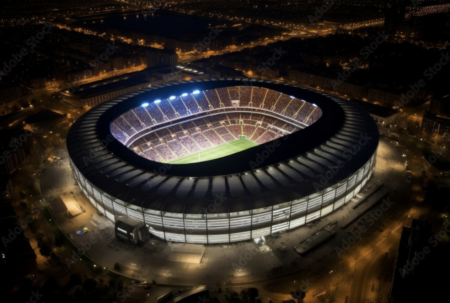English Premier League soccer team Chelsea FC has announced a two-year partnership with Ericsson that will see the communications company implement its Small Cell as a Service business model at Chelsea’s London stadium, Stamford Bridge.
During an announcement event at the stadium last week, Ericsson’s senior vice president, Europe & Latin America, Arun Bansal, outlined the details of the deal, and highlighted the benefits for both parties.
“A connected partnership means that we are going to provide seamless connectivity, Small Cell as a Service, for fans coming in to Stamford Bridge.
“Currently there is a limited amount of wi-fi in the stadium, but we will enhance it with the capability whereby fans coming to Stamford Bridge can have the same everyday speeds they have at home.”
The deal will enable the club to enrich the fan experience, as well as provide a platform that will benefit Chelsea’s other partners. Bansal also outlined a number of areas Ericsson had identified as being open to improvement through digitization – including safety and security, accessibility, personalization and the full-day experience.
“This is a platform that Chelsea can offer to its fans,” Bansal continued, “and to its partners, because this will offer the club a marketing platform for partners to take their offering and services in a totally new and different direction.”
“The experience of going to a football match, and of consuming football media, has clearly significantly changed with the internet and with phones,” added Gary Twelvetree, Chelsea director of marketing. “The stadium experience has changed. This is the next step in the fan experience, and in making that experience even more enjoyable, and more engaging.”
Improvement to the in-stadium connectivity opens up the potential for a number of enhanced services, including in-seat experience through greater availability of media content, sharing of social media, F&B provision, movement tracking and planning, and payment technology.
Later in the day, Ericsson also outlined a number of potential technology innovations that would be made possible by further enhanced connectivity within the stadium – and looked ahead to some of the advances that the introduction of 5G could usher in.
A high-performance network – one that offers low latency – and the availability of advanced analytics has the potential to make sensing technology (of the match ball, wearables and other player equipment) possible in real time, enabling coaching staff to monitor player performance and tactics and spot potential injuries.
Such high performance could also revolutionize maintenance procedures – live-streamed video can be combined with augmented reality for technicians working from a maintenance center. These, and numerous other advanced technologies, rely on high-powered networks. The partnership between Chelsea and Ericsson aims to provide just that.
July 19, 2017




